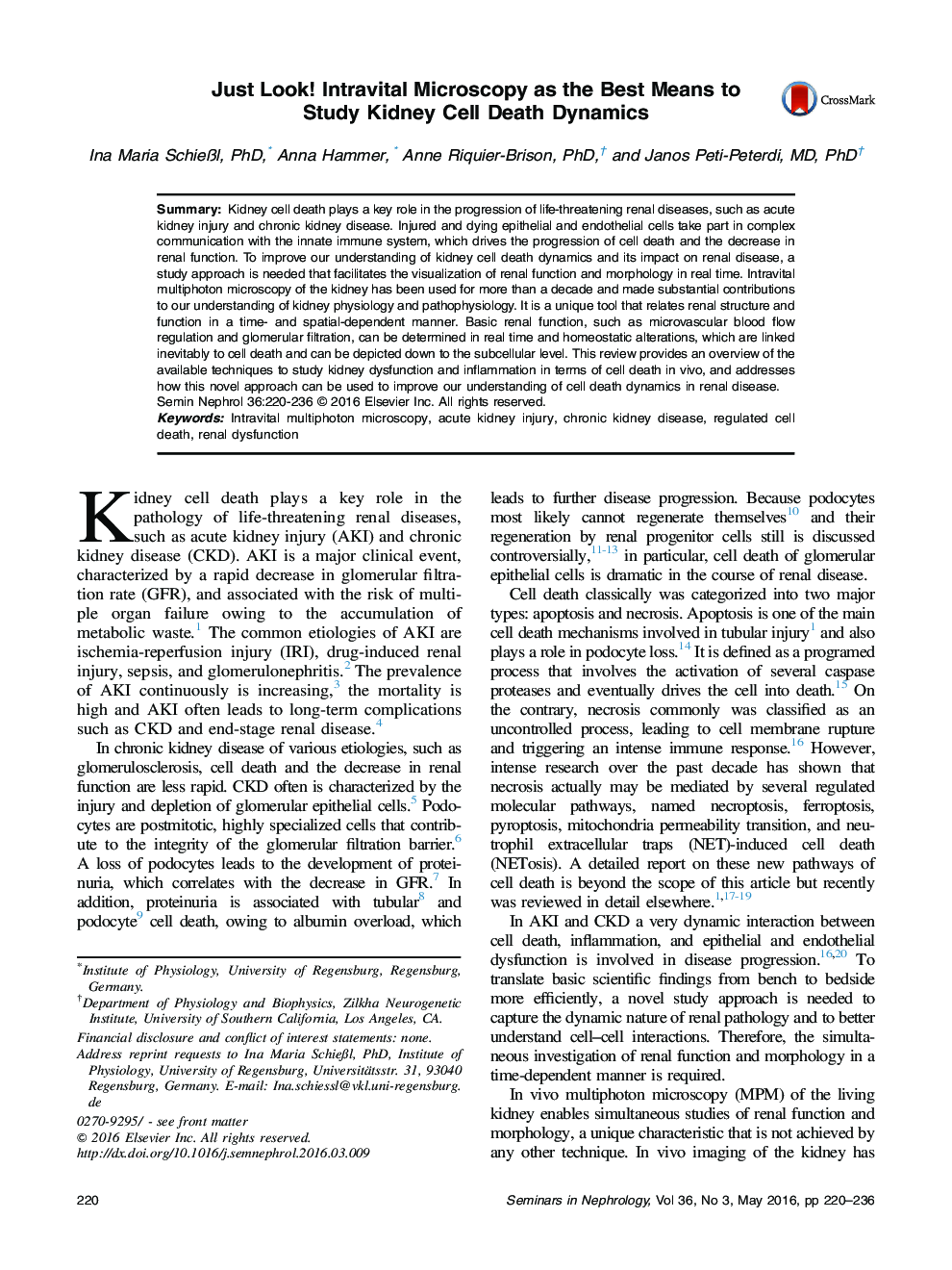| کد مقاله | کد نشریه | سال انتشار | مقاله انگلیسی | نسخه تمام متن |
|---|---|---|---|---|
| 3896232 | 1250206 | 2016 | 17 صفحه PDF | دانلود رایگان |
SummaryKidney cell death plays a key role in the progression of life-threatening renal diseases, such as acute kidney injury and chronic kidney disease. Injured and dying epithelial and endothelial cells take part in complex communication with the innate immune system, which drives the progression of cell death and the decrease in renal function. To improve our understanding of kidney cell death dynamics and its impact on renal disease, a study approach is needed that facilitates the visualization of renal function and morphology in real time. Intravital multiphoton microscopy of the kidney has been used for more than a decade and made substantial contributions to our understanding of kidney physiology and pathophysiology. It is a unique tool that relates renal structure and function in a time- and spatial-dependent manner. Basic renal function, such as microvascular blood flow regulation and glomerular filtration, can be determined in real time and homeostatic alterations, which are linked inevitably to cell death and can be depicted down to the subcellular level. This review provides an overview of the available techniques to study kidney dysfunction and inflammation in terms of cell death in vivo, and addresses how this novel approach can be used to improve our understanding of cell death dynamics in renal disease.
Journal: Seminars in Nephrology - Volume 36, Issue 3, May 2016, Pages 220–236
